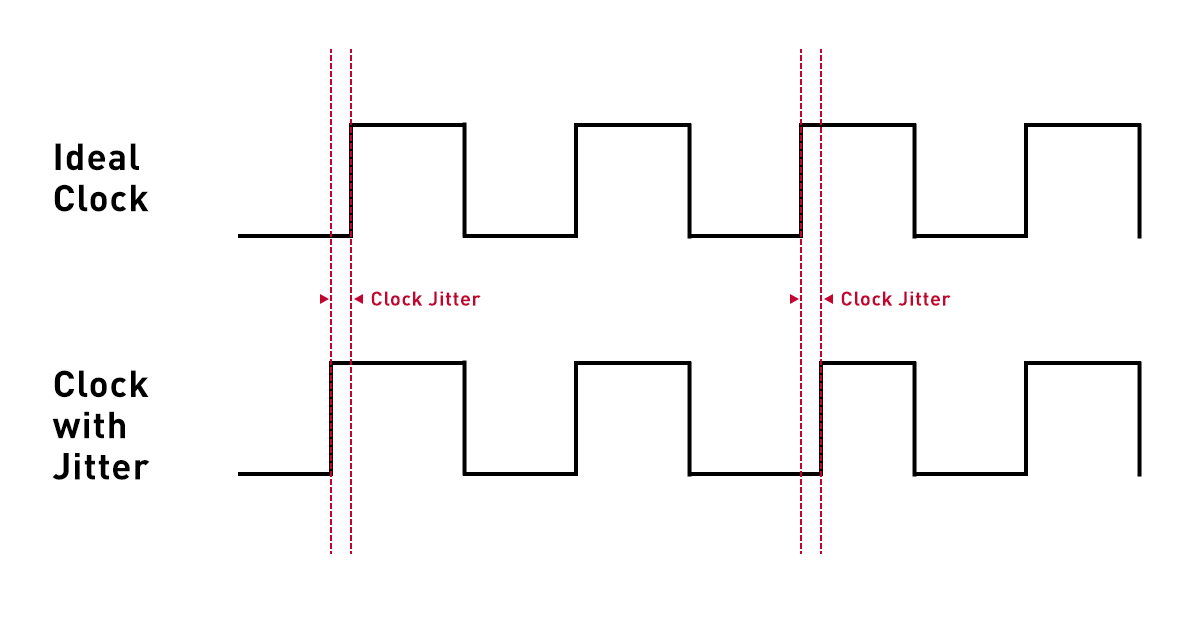What Is Jitter?
Learn More About A Potential Source Of Unwanted Distortion (And How To Reduce It).
You've probably seen jitter mentioned in articles — especially if you're reading reviews of A-D converters — and you know you want to avoid it. What is it, though, and more importantly, how can you keep it out of your recordings?
You've worked hard on your music. Getting the perfect take can be a lengthy process, and the last thing you want is your masterpiece marred by imperfections in your recording. Jitter can be the fly in the ointment — or perhaps the bug. Jitter is an unwanted variation in clock synchronisation.
A digital signal is composed of a number of samples per second and in a perfect world, these samples will be taken at regular intervals at times dictated by your interface's digital clock. Jitter occurs when the clock signal drifts slightly and the intervals between samples end up with tiny variations in length, causing distortion of the original sound when played back. It can occur in both the recording and reproduction of sound, although only the inbound analogue-to-digital jitter will be stored in the recording, and will therefore tend to be the main issue.

How Does Jitter Affect Recordings?
Jitter is heard as an unpleasant distortion or artifact in the sound, such as clicking. In addition, clicks and degradations that can be produced by jitter cannot be removed once they are on a recording — the damage is done and there is no going back. In this way it's much like clipping — it's irreversible. What's worse is that the higher quality you aim for with your recording, the more chance there is of jitter appearing. That's because higher sample rates require a much more precise clock signal and the same amount of jitter in microseconds will cause relatively more distortion per clock pulse.
Avoiding The Jitters
It goes without saying that if you want to keep jitter out of your recordings you will want to use equipment designed to convert signals from analogue to digital and back while adding the lowest possible jitter. Controlling jitter is not entirely a matter of the electronics inside your converter; it's a function of the overall clock stability of your digital audio system, which may or may not be confined to the converter itself.
To minimise jitter, you'll need the clock signal that controls the A-D or D-A converter to be of the highest possible quality. It's important that, whether it's internal or external, the clock controls the converter with maximum precision. Having all of your digital audio equipment controlled by a main clock ensures that jitter is strictly a function of that main clock rather than resulting from several different clocks' individual jitters. For that reason, professional studios often install a specific main clock designed for extremely low jitter.
Other factors can also contribute to jitter issues. For example, minimising the amount of sample rate conversion that has to be done will help preserve your signal quality — the more often you convert sample rates, the more chances there are of jitter creeping into your recording.
Focusrite is well aware of the problems that jitter can cause, and to minimise them, employ JetPLL® in their equipment. JetPLL is designed to clean up incoming clock signals — whether internal or via a network. For more about JetPLL, check out our full article here.
While jitter may not be the first thing newcomers to recording will need to worry about, it's something that will become more important as experienced engineers look towards refining their technique for the best possible results. It all comes down to the best possible clocking, and Focusrite equipment with JetPLL is intended to provide exactly that.
Words: Diana Smethurst

